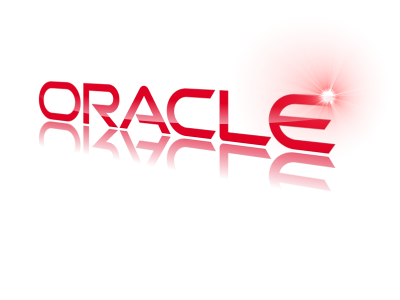When we use PL/SQL for processing the data, it is easy to track each SQL that is executing and its line no# associated with the PL/SQL units.
Let’s start with a demo.
demo@ORA11G> create or replace package mypkg
2 as
3 procedure p1;
4 procedure p2;
5 end;
6 /
Package created.
demo@ORA11G> create or replace package body mypkg
2 as
3 procedure p1 as
4 begin
5 for x in (select b1.owner,b2.username
6 from all_objects b1, all_users b2)
7 loop
8 null;
9 end loop;
10 end;
11
12 procedure p2 as
13 begin
14 for x in (select b1.owner,b2.username
15 from all_objects b1, all_users b2)
16 loop
17 null;
18 end loop;
19 end;
20 end;
21 /
Package body created.
Say I have a package “mypkg” with a couple of methods in it, now let’s execute this method from a connection.
demo@ORA11G> select userenv('sid') from dual;
USERENV('SID')
--------------
5
demo@ORA11G> exec mypkg.p2;
While this execution is in-progress, we could easily track the SQL that is currently executing along with its line no# with in the package.
rajesh@ORA11G> select sql_fulltext, program_id, program_line#,
2 (select object_name
3 from all_objects
4 where object_id = program_id) object_name ,
5 plsql_entry_object_id c1,
6 plsql_entry_subprogram_id c2,
7 plsql_object_id c3,
8 plsql_subprogram_id c4
9 from v$session b1,
10 v$sql b2
11 where b1.sid = 5
12 and b1.sql_id = b2.sql_id
13 and b1.sql_child_number = b2.child_number;
SQL_FULLTEXT PROGRAM_ID PROGRAM_LINE# OBJECT_NAME C1 C2 C3 C4
-------------------- ---------- ------------- ------------ ---------- ---------- ---------- ----------
SELECT B1.OWNER,B2.U 88507 5 MYPKG 88506 2
SERNAME FROM ALL_OBJ
ECTS B1, ALL_USERS B2
The PLSQL_ENTRY_OBJECT_ID and PLSQL_ENTRY_SUBPROGRAM_ID from V$SESSION would tell us the name of the package and method that is currently executing.
So the above output from V$SESSION tell us that we are executing second method from the package MYPKG.
rajesh@ORA11G> select owner,object_name,object_type,object_id
2 from all_objects
3 where object_id in( 88506,88507 );
OWNER OBJECT_NAM OBJECT_TYPE OBJECT_ID
---------- ---------- -------------------- ----------
DEMO MYPKG PACKAGE BODY 88507
DEMO MYPKG PACKAGE 88506
Similarly the PROGRAM_ID and PROGRAM_LINE# from the V$SQL provide us the information about the program unit and its line no# to which this SQL is currently located.
So the PROGRAM_ID = 88507 represents that it is a PACKAGE BODY (for the package MYPKG) and the PROGRAM_LINE# represents the line no# at which this SQL is present.
rajesh@ORA11G> column text format a40
rajesh@ORA11G> select line, text
2 from all_source
3 where name ='MYPKG'
4 and type ='PACKAGE BODY'
5 and owner ='DEMO'
6 and line <=10
7 order by line ;
LINE TEXT
---------- ----------------------------------------
1 package body mypkg
2 as
3 procedure p1 as
4 begin
5 for x in (select b1.owner,b2.username
6 from all_objects b1, all_users b2)
7 loop
8 null;
9 end loop;
10 end;
10 rows selected.
rajesh@ORA11G>
Let’s start with a demo.
demo@ORA11G> create or replace package mypkg
2 as
3 procedure p1;
4 procedure p2;
5 end;
6 /
Package created.
demo@ORA11G> create or replace package body mypkg
2 as
3 procedure p1 as
4 begin
5 for x in (select b1.owner,b2.username
6 from all_objects b1, all_users b2)
7 loop
8 null;
9 end loop;
10 end;
11
12 procedure p2 as
13 begin
14 for x in (select b1.owner,b2.username
15 from all_objects b1, all_users b2)
16 loop
17 null;
18 end loop;
19 end;
20 end;
21 /
Package body created.
Say I have a package “mypkg” with a couple of methods in it, now let’s execute this method from a connection.
demo@ORA11G> select userenv('sid') from dual;
USERENV('SID')
--------------
5
demo@ORA11G> exec mypkg.p2;
While this execution is in-progress, we could easily track the SQL that is currently executing along with its line no# with in the package.
rajesh@ORA11G> select sql_fulltext, program_id, program_line#,
2 (select object_name
3 from all_objects
4 where object_id = program_id) object_name ,
5 plsql_entry_object_id c1,
6 plsql_entry_subprogram_id c2,
7 plsql_object_id c3,
8 plsql_subprogram_id c4
9 from v$session b1,
10 v$sql b2
11 where b1.sid = 5
12 and b1.sql_id = b2.sql_id
13 and b1.sql_child_number = b2.child_number;
SQL_FULLTEXT PROGRAM_ID PROGRAM_LINE# OBJECT_NAME C1 C2 C3 C4
-------------------- ---------- ------------- ------------ ---------- ---------- ---------- ----------
SELECT B1.OWNER,B2.U 88507 5 MYPKG 88506 2
SERNAME FROM ALL_OBJ
ECTS B1, ALL_USERS B2
The PLSQL_ENTRY_OBJECT_ID and PLSQL_ENTRY_SUBPROGRAM_ID from V$SESSION would tell us the name of the package and method that is currently executing.
So the above output from V$SESSION tell us that we are executing second method from the package MYPKG.
rajesh@ORA11G> select owner,object_name,object_type,object_id
2 from all_objects
3 where object_id in( 88506,88507 );
OWNER OBJECT_NAM OBJECT_TYPE OBJECT_ID
---------- ---------- -------------------- ----------
DEMO MYPKG PACKAGE BODY 88507
DEMO MYPKG PACKAGE 88506
Similarly the PROGRAM_ID and PROGRAM_LINE# from the V$SQL provide us the information about the program unit and its line no# to which this SQL is currently located.
So the PROGRAM_ID = 88507 represents that it is a PACKAGE BODY (for the package MYPKG) and the PROGRAM_LINE# represents the line no# at which this SQL is present.
rajesh@ORA11G> column text format a40
rajesh@ORA11G> select line, text
2 from all_source
3 where name ='MYPKG'
4 and type ='PACKAGE BODY'
5 and owner ='DEMO'
6 and line <=10
7 order by line ;
LINE TEXT
---------- ----------------------------------------
1 package body mypkg
2 as
3 procedure p1 as
4 begin
5 for x in (select b1.owner,b2.username
6 from all_objects b1, all_users b2)
7 loop
8 null;
9 end loop;
10 end;
10 rows selected.
rajesh@ORA11G>
